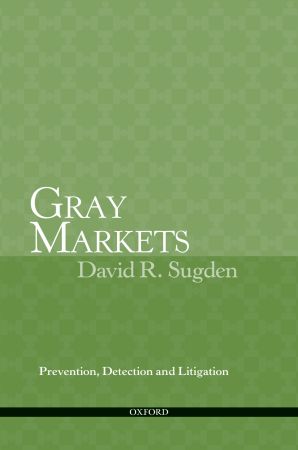We will be closed from 5pm Thursday 17th April for the Easter Bank Holidays, re-opening at 8.30am on Tuesday 22nd April. Any orders placed during this period will be processed when we re-open.

The gray market is a term used to describe the buying and selling of goods outside a manufacturer's authorized distribution channels. When products are leaked from their authorized supply chains, manufacturers loose their ability to monitor the quality and safety of their branded goods.
This title is the first comprehensive examination of the business and law of the gray market. It examines strategies to prevent, or at least minimize, gray market activity as well as methods used to detect breaches in authorized supply chains. It provides a comprehensive analysis of gray-market law, with illustrations of the judicial remedies and the substantive legal theories most often used when illegal gray market activity is discovered. Differences between criminal and civil proceedings-and the pros and cons of each-are discussed, along with relevant defenses.
Gray Markets is the first comprehensive examination of the business and law of the gray market. The first section of this book introduces the gray market and discusses the industries most affected by it, along with the factors-such as globalization and the Internet-contributing to its exponential expansion and some of the economic and social consequences.
The next section introduces various strategies to prevent, or at least minimize, gray market activity, including an analysis of the educational methods manufacturers have employed in these efforts. Following this, the book takes a look at the contract process between manufacturers and their authorized partners in the supply chain, including the procedures of qualifying channel partners and an examination of the contracts themselves. The book next focuses on specific means to prevent supply chain leakage, from on-site security to modern tracking technologies, and assesses the feasibility and effectiveness of such preliminary measures. Finally, this section examines alternative strategies that have been employed to "cope with" the gray market, rather than combat it.
A third section analyzes methods used to detect breaches in authorized supply chains. Here the warning signs of gray-market activity are discussed, along with detection strategies. From auditing channel partners to using private investigators for pretext purchases and even dumpster dives, this section also examines the legal boundaries of gray-market investigations.
The last section provides a comprehensive analysis of gray-market law, with illustrations of the judicial remedies and the substantive legal theories most often used when illegal gray market activity is discovered. Differences between criminal and civil proceedings-and the pros and cons of each-are discussed, along with relevant defenses. Finally, the book considers how some of the most important foreign jurisdictions have treated the illegal gray market.